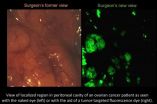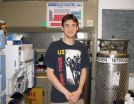(Press-News.org) BOULDER -- The planet's deep oceans at times may absorb enough heat to flatten the rate of global warming for periods of as long as a decade even in the midst of longer-term warming, according to a new analysis led by the National Center for Atmospheric Research (NCAR).
The study, based on computer simulations of global climate, points to ocean layers deeper than 1,000 feet (300 meters) as the main location of the "missing heat" during periods such as the past decade when global air temperatures showed little trend. The findings also suggest that several more intervals like this can be expected over the next century, even as the trend toward overall warming continues.
"We will see global warming go through hiatus periods in the future," says NCAR's Gerald Meehl, lead author of the study. "However, these periods would likely last only about a decade or so, and warming would then resume. This study illustrates one reason why global temperatures do not simply rise in a straight line."
The research, by scientists at NCAR and the Bureau of Meteorology in Australia, will be published online on September 18 in Nature Climate Change. Funding for the study came from the National Science Foundation, NCAR's sponsor, and the Department of Energy.
Where the missing heat goes
The 2000s were Earth's warmest decade in more than a century of weather records. However, the single-year mark for warmest global temperature, which had been set in 1998, remained unmatched until 2010.
Yet emissions of greenhouse gases continued to climb during the 2000s, and satellite measurements showed that the discrepancy between incoming sunshine and outgoing radiation from Earth actually increased. This implied that heat was building up somewhere on Earth, according to a 2010 study published in Science by NCAR researchers Kevin Trenberth and John Fasullo.
The two scientists, who are coauthors on the new study, suggested that the oceans might be storing some of the heat that would otherwise go toward other processes, such as warming the atmosphere or land, or melting more ice and snow. Observations from a global network of buoys showed some warming in the upper ocean, but not enough to account for the global build-up of heat. Although scientists suspected the deep oceans were playing a role, few measurements were available to confirm that hypothesis.
To track where the heat was going, Meehl and colleagues used a powerful software tool known as the Community Climate System Model, which was developed by scientists at NCAR and the Department of Energy with colleagues at other organizations. Using the model's ability to portray complex interactions between the atmosphere, land, oceans, and sea ice, they performed five simulations of global temperatures.
The simulations, which were based on projections of future greenhouse gas emissions from human activities, indicated that temperatures would rise by several degrees during this century. But each simulation also showed periods in which temperatures would stabilize for about a decade before climbing again. For example, one simulation showed the global average rising by about 2.5 degrees Fahrenheit (1.4 degrees Celsius) between 2000 and 2100, but with two decade-long hiatus periods during the century.
During these hiatus periods, simulations showed that extra energy entered the oceans, with deeper layers absorbing a disproportionate amount of heat due to changes in oceanic circulation. The vast area of ocean below about 1,000 feet (300 meters) warmed by 18% to 19% more during hiatus periods than at other times. In contrast, the shallower global ocean above 1,000 feet warmed by 60% less than during non-hiatus periods in the simulation.
"This study suggests the missing energy has indeed been buried in the ocean," Trenberth says. "The heat has not disappeared, and so it cannot be ignored. It must have consequences."
A pattern like La Niña
The simulations also indicated that the oceanic warming during hiatus periods has a regional signature. During a hiatus, average sea-surface temperatures decrease across the tropical Pacific, while they tend to increase at higher latitudes, especially around 30°S and 30°N in the Pacific and between 35°N and 40°N in the Atlantic, where surface waters converge to push heat into deeper oceanic layers.
These patterns are similar to those observed during a La Niña event, according to Meehl. He adds that El Niño and La Niña events can be overlaid on top of a hiatus-related pattern. Global temperatures tend to drop slightly during La Niña, as cooler waters reach the surface of the tropical Pacific, and they rise slightly during El Niño, when those waters are warmer.
"The main hiatus in observed warming has corresponded with La Niña conditions, which is consistent with the simulations," Trenberth says.
The simulations were part of NCAR's contribution to the Coupled Model Intercomparison Project Phase 5 (CMIP5). They were run on supercomputers at NCAR's National Science Foundation-supported Climate Simulation Laboratory, and on supercomputers at Oak Ridge Leadership Computing Facility and the National Energy Research Scientific Computing Center, both supported by the Office of Science of the U.S. Department of Energy.
###
The University Corporation for Atmospheric Research manages the National Center for Atmospheric Research under sponsorship by the National Science Foundation. Any opinions, findings and conclusions, or recommendations expressed in this publication are those of the author(s) and do not necessarily reflect the views of the National Science Foundation.
END
WEST LAFAYETTE, Ind. - The first fluorescence-guided surgery on an ovarian cancer patient was performed using a cancer cell "homing device" and imaging agent created by a Purdue University researcher.
The surgery was one of 10 performed as part of the first phase of a clinical trial to evaluate a new technology to aid surgeons in the removal of malignant tissue from ovarian cancer patients. The method illuminates cancer cells to help surgeons identify and remove smaller tumors that could otherwise be missed.
Philip Low, the Ralph C. Corely Distinguished Professor of ...
Scientists at the University of Plymouth have shown, for the first time in an animal, that nanoparticles have a detrimental effect on the brain and other parts of the central nervous system.
They subjected rainbow trout to titanium oxide nanoparticles which are widely used as a whitening agent in many products including paints, some personal care products, and with applications being considered for the food industry. They found that the particles caused vacuoles (holes) to form in parts of the brain and for nerve cells in the brain to die. Although some effects of nanoparticles ...
Production of crop milk, a secretion from the crops of parent birds, is rare among birds and, apart from pigeons, is only found in flamingos and male emperor penguins. Essential for the growth and development of the young pigeon squab, pigeon 'milk' is produced by both parents from fluid-filled cells lining the crop that are rich in fat and protein. Research published in BioMed Central's open access journal BMC Genomics uses new technology to study the genes and proteins involved in pigeon 'milk' production and shows that pigeon 'milk' contains antioxidants and immune-enhancing ...
Researchers whose findings on the detrimental impact of some common medicines on elderly people were widely reported earlier in the summer have found that taking a few of these medicines does not appear to cause further cognitive impairment in those already suffering from dementia.
In a paper published today by the journal Age and Ageing, Dr Chris Fox of the University of East Anglia (UEA) and colleagues from a number of other universities and the NHS describe how they studied a clinically representative sample of 224 people with established Alzheimer's dementia who ...
ITHACA, N.Y. – With an eye toward understanding DNA replication, Cornell researchers have learned how a helicase enzyme works to actually unzip the two strands of DNA. (Nature, online Sept. 18, 2011.)
At the heart of many metabolic processes, including DNA replication, are enzymes called helicases. Acting like motors, these proteins travel along one side of double-stranded DNA, prompting the strands to "zip" apart.
What had been a mystery was the exact mechanics of this vital biological process – how individual helicase subunits coordinate and physically cause the unzipping ...
Gamers have solved the structure of a retrovirus enzyme whose configuration had stumped scientists for more than a decade. The gamers achieved their discovery by playing Foldit, an online game that allows players to collaborate and compete in predicting the structure of protein molecules.
After scientists repeatedly failed to piece together the structure of a protein-cutting enzyme from an AIDS-like virus, they called in the Foldit players. The scientists challenged the gamers to produce an accurate model of the enzyme. They did it in only three weeks.
This class ...
TORONTO, ON – Researchers from the University of Toronto (U of T), the King Abdullah University of Science & Technology (KAUST) and Pennsylvania State University (Penn State) have created the most efficient solar cell ever made based on collodial-quatum-dots (CQD).
The discovery is reported in the latest issue of Nature Materials.
Quantum dots are nanoscale semiconductors that capture light and convert it into an energy source. Because of their small scale, the dots can be sprayed on to flexible surfaces, including plastics. This enables the production of solar cells ...
SALT LAKE CITY, Sept. 19, 2011 – University of Utah engineers who built wireless networks that see through walls now are aiming the technology at a new goal: noninvasively measuring the breathing of surgery patients, adults with sleep apnea and babies at risk of sudden infant death syndrome (SIDS).
Because the technique uses off-the-shelf wireless transceivers similar to those used in home computer networks, "the cost of this system will be cheaper than existing methods of monitoring breathing," says Neal Patwari, senior author of a study of the new method and an assistant ...
NEW YORK, N.Y. (September 18, 2011) – Research supported by the Autism Speaks Autism Treatment Network (ATN), demonstrating that symptoms of attention deficit and hyperactivity worsen quality of life for individuals with autism spectrum disorders (ASD), was presented today at the Society for Developmental & Behavioral Pediatrics Annual Meeting in San Antonio, Texas. Researchers Parul Vora, M.D., developmental-behavioral pediatric fellow at Nationwide Children's and Darryn Sikora, Ph.D., Director of the Autism Program at Oregon Health Sciences University, used data exclusively ...
More species could be saved from extinction under climate change thanks to a new model scientists have developed to guide allocation of conservation funding.
The international team, led by Dr Brendan Wintle of the University of Melbourne and the ARC Centre of Excellence for Environmental Decisions, is the first to develop a pioneering decision-support model that incorporates both ecological and economic information to guide conservation investment in the face of climate change. The work is published today [Monday 19 September] in the journal Nature Climate Change.
"The ...



